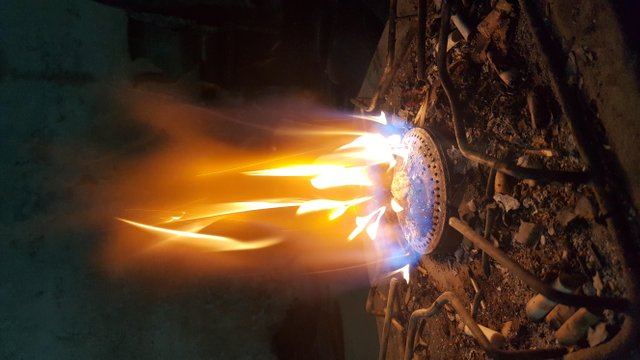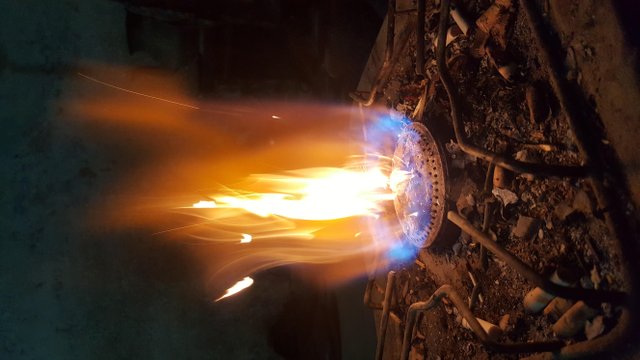Fire ignited in fire

Fire is life
Which provides luxity to humans
Landscape modification
Coppicing basket materials
Clearing brush for ease of travel and hunting
Removing thatch in late fall to promote wildflower seeds and bulbs for food
Burning meadows in summer to promote seed bearing grasses (weeding and fertilizing)
General burning to revitalize plant communities for greater abundance
Clear ground for food gathering
Hunting
Drive grasshoppers into cooking pit
Drive ground squirrels from holes
Smoke bees from hive
Chase bison and other game over cliff or into trap
Night fishing with torch
Cooking
Roasting on coals or grill
Baking in pit or stone oven
Indirect cooking - as planking salmon
Boiling in clay pot or stone boiling in basket or wooden bowl, etc.
Parching seeds
Steam bending wood
Straighten arrow, dart and spear shafts
Recurve and reflex bows
Bend basket rim sticks
Bend looped stirring sticks for stone boiling
Straighten hand drills for fire making
Smoking hides and meat to preserve
Softening tar and pitch for adhesive
Heat treating stone for tools
Wood working
Burn bowls and spoons
Dugout canoes
Burning down trees
Sharpening and fire hardening digging sticks and spears
General burn and scrape shaping
Making charcoal
For cooking and heating
For smelting metals
For firing pottery
For blacksmithing and metal casting
For pigment
For medicine and water purification
Charring to preserve house posts from insects and rot
Smudge fires to repel mosquitoes
Fire to repel predators
Heating shelters, etc.
Lighting (torches)
Smoking tobacco and medicines
Cauterizing wounds
Communication - signaling
Steaming
To extract agave fibers
To soften bone and wood for working
Ceremonies - uses too numerous to list
The listing above is limited to what I could think of sitting at my computer. I'm sure I've left out many other applications of one of our most basic tools - including most modern industrial uses such as generating the electricity that runs my PC. Most anthropologists would agree that the ability to use fire and make tools were what separated us from our earlier ancestors and made us human. Both require memory and advanced planning to be effective. Perhaps the most profound of these uses of fire, and the ones I listed first, are the ways early humans used it to modify the landscape to provide an easier life. Generations of observing accidental burns led most of the world's groups to understand the optimal pattern of burning to maximize valuable food resources.
In California, burning right after the harvest of the largest grass seeds in the summer eliminated shrubs and those species which had not yet set seed, and turned the dead thatch from one years growth into fertilizer for the next. Harvesting techniques were inefficient enough to provide seed. Over time, whole meadows became stands of the food producing grass. Burning the hills just before the winter rains gave a head start to wildflowers and opened up the ground to sunlight. This also favors the growth of bulbs. The two foods that were served to the Spanish explorers near San Francisco Bay were seed cakes from Red Maids and the bulbs called brodeias. Without fire, Red Maids are rather rare today.
This same pattern was common around the world. The Australian Aborigines are referred to as fire stick farmers in some books due to their ability to create farm field like abundance through planned burning. What European settlers saw as a wilderness in the Americas, Africa and Australia was a carefully cultivated garden maintained by fire. A very good book on this subject is Before the Wilderness - Environmental Management by Native Californians, T.C.Blackburn, editor, Ballena Press, Menlo Park, CA, 1993. Alice Tulloch makes reference to this work in her discussion of cultivating basketry materials in her lithic challenge piece in the Bulletin of Primitive Technology, #21. Without fire, early human lifestyles would have been close to the stereotype of the hand to mouth hunter and gatherer, who eats each day only what he can find. Abundances, such as fish runs, along with those created by careful use of burning gave these people food quantities as great as farming, but with more variety and nutrition, and less work.
Fire was also useful in food collecting directly. Chasing game such as bison or mastodons into traps, or over cliffs with torches or set fires has been a standard of illustrators of stone-age life for decades. Once the mega-fauna were gone, the same process was done in miniature to chase large numbers of grasshoppers to their deaths in a fire pit in the center of the burned field.
The California landscape was subjected to frequent burning. The life cycle of many plants seems to indicate that fires at least every 20 years or so are necessary to maintain some ecosystems, such as chaparral and the Southern Pine Forest. By burning more regularly, the native folk also provided a better quality of food for deer and rabbits, and kept it at a level that could be reached by these browsers. The burned areas were easier to hunt in because of the greater number of 'huntees' and also the reduced, but not absent, brush for visibility and stalking. The eastern half of the North American continent was described by the first Europeans as being park-like, with tall trees above a grassy floor. Having tried to sneak up on deer in overgrown, unburned brush has taught me this value of fire. Unfortunately, in the modern world, uncontrolled fire is an enemy and has been repressed until our forests, grassland and brushland are constantly in danger from either going senile, or falling victim to a fire so hot it destroys the trees and seeds rather than rejuvenating them. Now the National Park Service has learned, and has started burning the meadows at Yosemite and other parks. Eventually we may relearn the lessons discovered by our ancestors over hundreds of thousands of years.

You got a 0.50% upvote from @postpromoter courtesy of @geologist! Want to promote your posts too? Check out the Steem Bot Tracker website for more info. If you would like to support development of @postpromoter and the bot tracker please vote for @yabapmatt for witness!